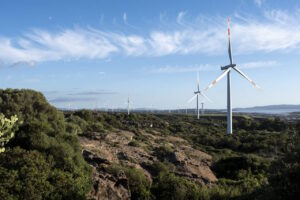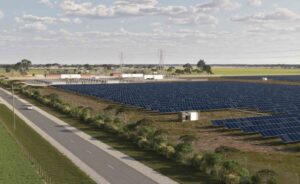Texas is known as the dominant oil state in the US, and its grid is not the most renewable in the world. But because of its size, its traditional reliance on fossil fuels, and its rapid recent uptake of solar and batteries in the face of fierce winter storms and searing summer heat, it has been centre stage for those watching the energy transition.
It’s also interesting for Australia, because although it has about the same population, its grid demand is almost twice as great as Australia’s main grid, yet its average wind and solar penetration (31 per cent) and its peak instantaneous wind and solar penetration (71 per cent) are about the same.
While Australia is dependent still on coal, the main fossil on the Texas grid is gas, with supporting roles for nuclear and an ever decreasing amount of coal. Texas made its initial move into renewables with big wind, but is now more focused on large scale solar and battery storage.
This week, records on the Texas grid have tumbled in the midst of yet another heatwave, with gross load hitting a new peak of nearly 86 gigawatts (GW) on Wednesday (Texas time), and net load hitting a new record of 70.9 GW. That’s more than twice the record demand for Australia’s main grid, despite having around the same population.
What was also notable, and a keen point of interest in those following the energy transition, was that solar power and battery storage also set new peaks, and helped to moderate wholesale power prices in the evening peak and keep them low during the day.
One analyst Jonathon Blackburn noted that despite the new peak, real time prices hovered at around $US45/MWh, the direct result of the enormous amount of solar placed in service the past couple of years.
(Texas has installed more solar in the last two years than any other state in the US and in the past few days it has accounted for more than 20 per cent of its daytime power generation).
“And when the sun began to set, the market functioned exactly as intended – real time prices increased (signaling to generators that more power was needed) – and battery energy storage responded a big way,” Blackburn noted.
“Big enough that another record was set, the amount of BESS (battery energy storage) being provided to the grid, at nearly 4GW at the peak. This is the energy transition in real time, and Texas is leading the way.” Well, California may beg to differ, see: Deeper longer cleaner, big batteries extend domination of California’s evening demand peaks.

His observations were confirmed and echoed by other analysts, including at Grid Status, which provides real time and historical data on all grids across the US, and published this graph above.
In a post on LinkedIn, Grid Status also noted – thanks to strong solar generation throughout the day – prices remained under control, even during the peak.
As the sun set and solar output decreased, the Texas grid, known as ERCOT (The Electric Reliability Council of Texas) set a new record for net load, which is where battery storage stepped in, shattering the record it set just a day earlier by 20 per cent.
And while the prices nearly reached the bid cap of $US5,000, they did fall short of that cap – unlike other occasions pre-solar and battery storage – and nearly all available capacity was deployed without any reliability issues.
Also, unlike recent events where trips of nuclear power plants and coal fired generators have required battery storage to step in and fill the gap.
“ERCOT’s performance under these challenging conditions showcases the evolving dynamics of our grid and the critical role of all resources in keeping the system balanced,” Grid Status observed.
Doug Lewin, a local energy market commentator and podcaster, also noted the changes.
“In August 2019, ERCOT declared energy emergencies in the afternoon twice. Peak demand was less than 75 gigawatts and prices were near the cost cap,” he wrote in another LinkedIn posts.
“Fast forward five years to this week and peak demand is above 85 gigawatts in the afternoon and no energy emergencies or conservation alerts at the afternoon peak. Prices are 99% below the price cap.
“The difference? Solar power.”
For an interesting and entertaining discussion with Lewin about the developments of the Texas grid, please listen to this recent episode of Renew Economy’s popular Energy Insiders podcast.










